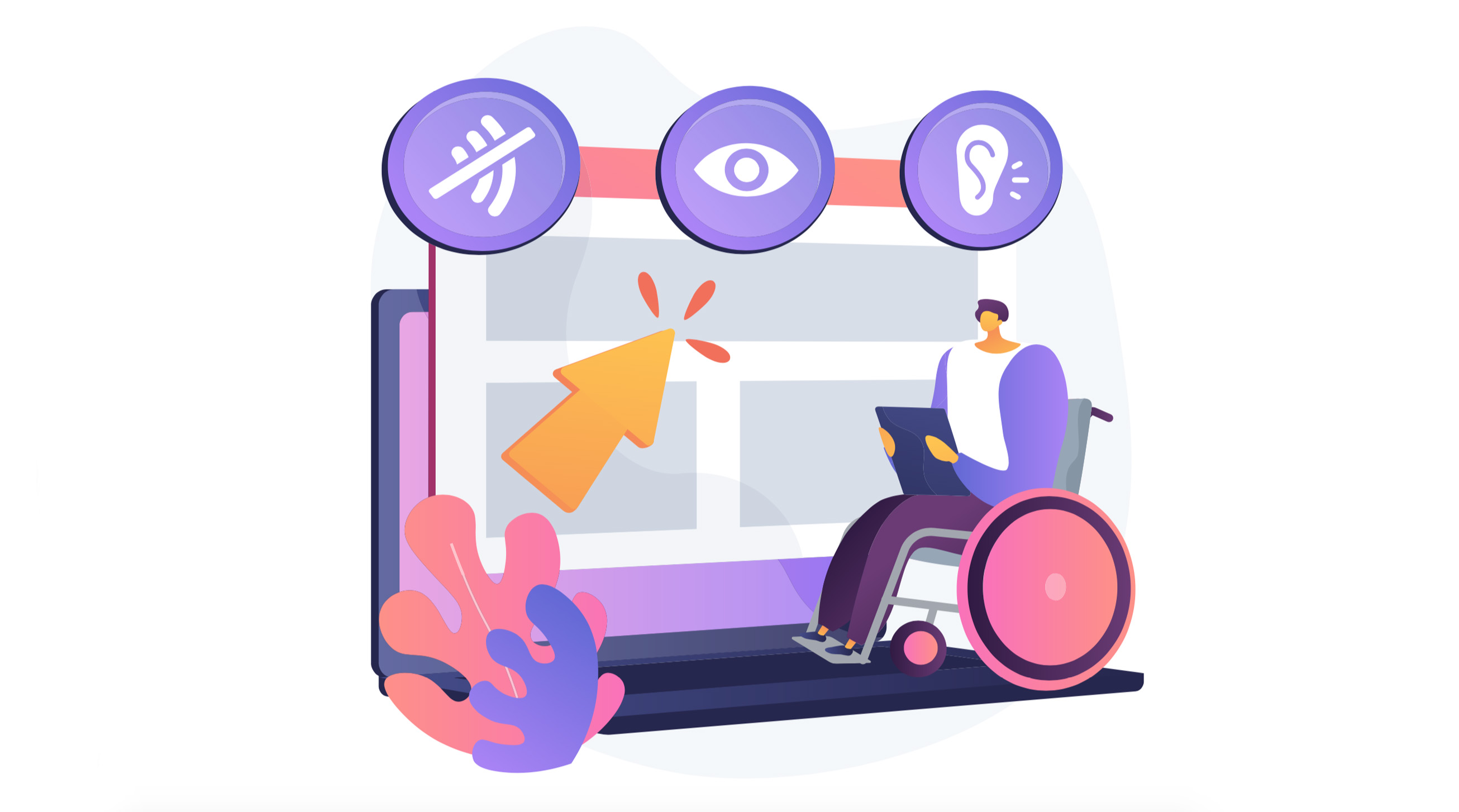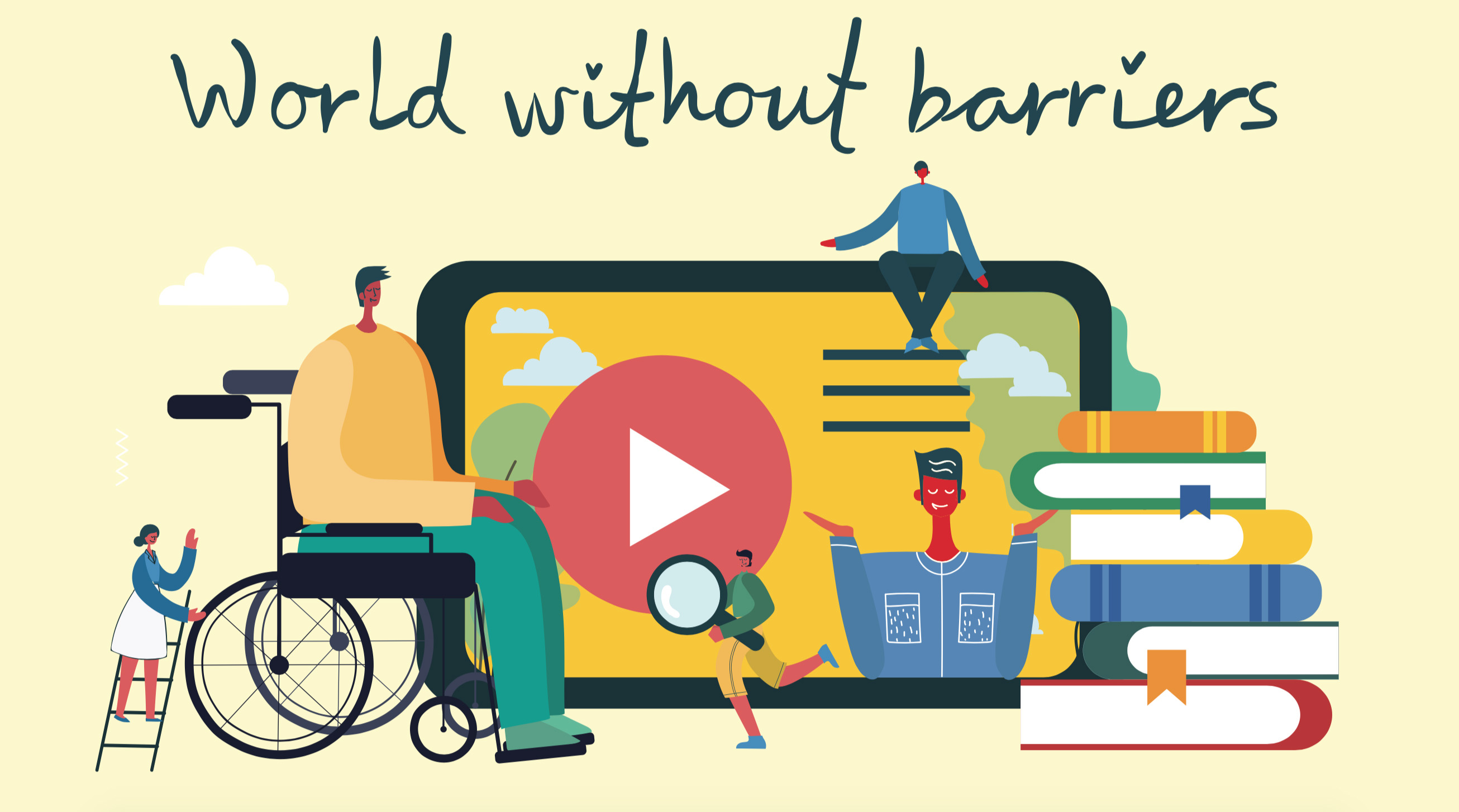
Accessibility and inclusion are topics at the forefront of website design this year. Section 508 of the US federal law invites agencies to provide people with disabilities equal access to electronic information and data, comparable to users without disabilities.
When it comes to online accessibility, the various laws and regulations around the world can be confusing. In the US, developers must be familiar with a set of daunting guidelines under the obscure acronyms WCAG, UAAG, ATAG, and WAI-ARIA, which are not easy to integrate.
When businesses look into website accessibility, they usually investigate their front-end development or the visible part of a website design. A step beyond making digital content accessible is making the content management system (CMS) of a website ready to use by people with disabilities. An accessible CMS means developing authoring tools that allow people with disabilities to create, edit, modify or update manageable from a content management system.
We recently spoke to a global engineering company that asked if we could build an accessible CMS for their website. Our client had strict requirements for their platform. They were looking to develop a public-facing site that is easy to use by screen readers, magnification tools, and more, but also allows their own employees to be engaged and manage the content. Many businesses are moving towards backing up their message and what inclusivity across their workplace truly means. In workplaces that employ people working in digital marketing, with visual, hearing, or other physical impairments, it is essential to develop a website CMS that facilitates the successful operation of that platform by all employees, irrespective of any potential disabilities.
Web accessibility is a pressing issue in the digital technology world, yet very few open-source software and content management systems are truly accessible. Not many CMS developers provide websites that can be managed by people with disabilities.
Making a website accessible involves solving challenges — code, technical know-how, and implementation compliance. The task of reorganizing an existing CMS code can be tricky and requires a solid understanding of the needs of people with disabilities as well as a thorough knowledge of various accessibility guidelines. Your company will also have to think about how “much” accessibility are you looking to incorporate. This is an important step, and legal and business leaders should be consulted.
This article reviews the key concepts of web accessibility and discusses the challenges and benefits of developing an accessible website design, but more importantly how the CMS can also follow those standards.
ABOUT WEB ACCESSIBILITY
Web accessibility removes online barriers and makes information easy to use by visitors with impairments. The term is quite vague as it covers a wide range of recommendations on how to create user-friendly content for people with blindness or low vision, deafness and hearing loss, limited movement, speech disabilities, photosensitivity, learning disabilities, and cognitive limitations. The user interface elements and set of attributes have for mission to improve the accessibility and interoperability of web content and applications.
Web accessibility is very difficult to describe as it affects people with various challenges. WCAG, UAAG, ATAG, and WAI-ARIA guidelines address the accessibility of web information on desktops, laptops, tablets, and mobile devices. Integrating these recommendations will help make web content more accessible by users in general.
Why should your website be accessible? Besides being the right thing to do, an accessible website will allow more people to visit and use your site, services, or CMS.
We should also mention that although The Americans with Disabilities Act (ADA) does not specifically mention websites and electronic information, it offers people with disabilities protection from disability-based discrimination. This recently led to a $6 million class-action lawsuit against Target.com. The plaintiff claimed that Target’s website was not accessible and the company promised to embed code that makes the site usable by blind visitors. Here are additional case studies to consider the cost and risk of inaction.
GUIDELINES
The main accessibility requirements are found in the Web Content Accessibility Guidelines (WCAG) 2.1 and the Federal Section 508 Guidelines (subpart B- 1194.22). To be accessible, web pages need to be made “easier to see”. Building a design that includes people with different impairment barriers is not an easy task. The diverse nature of disabilities creates a wide variation in how online information is perceived. For example, visually impaired users encounter problems with images, forms, complex tables, and pop-up windows. Hearing-impaired users meet challenges with podcasts or video information presented without captions. Web users with physical disabilities have trouble with keyboard navigation or small link areas. Sensory impaired users (users with autism or users with a high risk of epilepsy) must be careful with flashing elements that can trigger seizures. Users with learning disabilities have trouble reading complex or “busy” web pages and forms.
We recommend planning for accessibility throughout the entire website design and development process. To ensure a web page is friendly to people with visual, audio, or physical handicaps, our team conducts regular accessibility tests. We also work with external consultants specializing in online accessibility.
ACCESSIBILITY BENEFITS
Users benefit greatly from designs that are easier to see. A clean and clear visual presentation helps everyone make sense of your information and the functionality of a webspace. Besides assisting impaired users, accessibility guidelines are also helpful in other situations.
Web accessibility is a great SEO booster. It helps Google’s algorithms understand your content. After all, Google is often referred to as “the largest blind user on the internet”.
Optimizing your accessibility keeps your information lean and fast loading. This will benefit users surfing on their phones that have turned images off and visitors looking to save bandwidth.
Optimizing user accessibility also benefits non-native English speakers. By simplifying the language and message of your webspace you make the information easier to understand by foreign visitors.

CMS ACCESSIBILITY
Your CMS is the administrative panel you use to control your website. It’s designed to help create, edit, organize and present information on the web.
When it comes to CMS accessibility, we are talking about the ability of an impaired person to add and maintain content online. To audit your CMS, you should ask yourself these 3 basic questions:
- Can someone navigate through the interface without using a mouse?
- Is your content (including images, frames, visual elements) accessible to a screen reader user?
- Is it easy to understand and interact with the interface?
The National Center on Disability and Access to Education (NCDAE) has detailed technical guidelines on how to improve your CMS accessibility.
There are hundreds of CMS options your company can choose to manage its website. The most popular include WordPress, Joomla!, Drupal, Typo3, Movable Type, Xoops, Xaraya, Plume, e107, PHP Nuke, PostNuke, B2Evolution, Plone, Umbraco (etc..). And many solutions that are no open-source, like Adobe, Sitecore, Episerver, and more. To see exactly how many different open-source software is available, you can review and compare them all here. Each CMS has different features and strengths, but most of them are not set up to comply with web accessibility properly.
WordPress, the most popular CMS in the world, is not accessibility compliant out of the box. Drupal, Joomla, and Magento are also lacking accessibility features without additional coding work. Most CMS do not pass the online accessibility tests and completely fail when it comes to the accessibility of their administrative interface.
HOW TO DEVELOP AN ACCESSIBLE CMS
Using an open-source development framework like CakePHP, we can create an administrative panel that allows someone with disabilities to be able to navigate and change content in the CMS using tools that improve their ability to operate and navigate a computer. The process is not easy and takes a lot of engineering. It also requires custom development.
We are currently working on one such project with New York City’s Theater Development Fund (TDF). TDF is a not-for-profit organization dedicated to bringing the power of the performing arts to everyone, including people with disabilities. This is why an accessible website design is at the core of their needs and mission. To achieve this result we have tested and validated all of our digital templates. Our team is working closely with TDF’s accessibility consultant, making sure the designs we produce are not only exciting to TDF’s audience, but can be browsed by people with distinct challenges.
As each CMS has different functionalities it’s impossible to advise you on a bulletproof recipe. That said, the W3C, WCAG, ATAG, and WAI-ARIA guidelines are a good first step towards accessibility. This is a fantastic evolution as more and more organizations are trying to be inclusive for all the right reasons.
Our team is committed to making websites accessible to every audience. For advice just say hello@edesigninteractive.com. Our New Jersey web design specialists will be happy to connect with you.